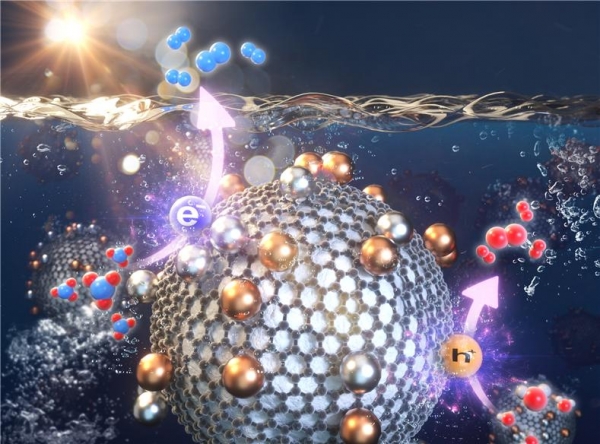
High summer temperatures cause green algae to flourish in lakes and rivers, leading to green algal blooms. Wastewater and fertilizer provide nutritive salts like nitrogen compounds to the freshwater deposits, accelerating algal spread and water quality deterioration. One of the most important technologies to prevent this spread is denitrification, which converts nitrate into dinitrogen and allows it to escape the water, leading to a decrease in nutritive salts.
Professor Choi Wonyong of the Division of Environmental Science and Engineering (DESE) and Lee Shin-bi (DESE Ph.D. candidate, advisor Prof. Choi Wonyong) developed a novel photocatalytic material that selectively converts waste material and nitrates, which cause algal blooms, into dinitrogen gas without chemical reductants. Their findings were published as the back-cover paper of Energy & Environmental Science, one of the most renowned journals in academia published by the Royal Society of Chemistry (RSC).
This research has been acclaimed as an innovative study that perfectly solves limitations in current denitrification processes. Previous methods required not only large amounts of energy, but also reductants such as hydrogen gas, methanol, and formic acid. There have been attempts to use photocatalysis as a green solution, but many methods required chemical reductants and had economic or feasibility hurdles that held them back.
Prof. Choi and Lee’s study started from the idea of using a photocatalyst, a semiconductor material that could induce a redox reaction from an interfacial reaction caused by the interaction between electrons and positive holes made by light. The research team used a modified titanium dioxide (TiO2) composite photocatalyst on which a Cu-Pd bimetallic co-catalyst and reduced graphene oxide (rGO) were loaded on together. The photocatalyst reduced 100% of 600ppm nitrate, of which 98% was converted into dinitrogen.
The photocatalyst uses a water splitting reaction to make hydrogen and uses it directly as a reductant, eliminating chemical reductants from the process and refining existing problems in denitrification catalysts. Also, the absence of nitrite ions as a byproduct makes the catalyst an eco-friendly one.
The research was supported by the National Research Foundation of Korea.


